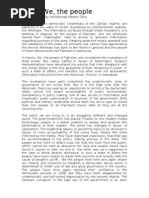Almond Verba Civic Culture Pdf Download
The Civic Culture or The Civic Culture: Political Attitudes and Democracy in Five Nations is a 1963 political science book by Gabriel Almond and Sidney Verba. The book is credited with popularizing the political culture sub-field and is considered to be the first systematic study in this field. Aquatronic 3 Shower Manuals there.


Published in English December 1963 Media type Print Pages 574 ppg (1963 release) (1963 release) (1989 release) The Civic Culture or The Civic Culture: Political Attitudes and Democracy in Five Nations is a 1963 political science book by and. The book is credited with popularizing the sub-field and is considered to be the first systematic study in this field. Synopsis [ ] In the text Almond and Verba examine the democratic systems in five countries, the United States, Germany, Mexico, Italy, and the United Kingdom. They interviewed about a thousand individuals in each country on their views of government and political life.
As they define it, the 'civic culture' (singular) is 'based on communication and persuasion, a culture of consensus and diversity, a culture that [permits] change but [moderates] it' (Almond and Verba 1963, 8). They identify three political structures: participant, subject, and parochial. They consider political culture to be the element that connects individual attitudes with the overall political system structure. Almond and Verba considered the Italian emphasis on the family as the driving main force for society as 'amoral' (in the words of Edward Banfield (The Moral Basis of a Backward Society, 1958), or 'exclusive', and believed that such a culture would impede the culture's potential for developing a 'sense of community and civic culture,' which they saw as a necessary background for 'effective democracy'. Reception and criticisms [ ] wrote in The Democratic Century that Almond and Verba 'did argue persuasively that the extent of civic culture could be predicted by structural and historical factors' but that there was also 'strong evidence that some aspects of the civic culture were powerfully associated with education levels, across national borders'.
The Civic Culture was criticized for having an 'Anglo-American bias', with the authors stating that only the United Kingdom and the United States possessed the capability for long term democratic stabilization. Starcraft 2 Wings Of Liberty Download Free Full Game Torrent. Critics also expressed skepticism over the accuracy of depicting a culture based upon individual interviews and that the approach was 'ethnocentric and more prescriptive than objective and empirical'. References [ ]. • Baker, Kendall (181).. Harvard University Press..
• Wilson, Catherine (2008).. • Caramani, Daniele (2008).. Oxford University Press. • Crothers, Lane (2000).. Palgrave Macmillan.
• Franklin, Daniel (2006).. Rowman & Littlefield Publishers. • Kawata, Junichi (2006)..
Ashgate Pub Co. • Lipset, Seymour (2004).. University of Oklahoma Press. • Axleford, Barry (1997). Politics: An Introduction.
• Barrington, Lowell (2009).. Wadsworth Publishing.
In economics, physical capital or just capital is a factor of production (or input into the process of production), consisting of machinery, buildings, computers, and the like. The production function takes the general form Y=f(K, L), where Y is the amount of output produced, K is the amount of capital stock used and L is the amount of labor used. In economic theory, physical capital is one of the three primary factors of production, also known as inputs in the production function. The others are natural resources (including land), and labor — the stock of competences embodied in the labor force. 'Physical' is used to distinguish physical capital from human capital (a result of investment in the human agent)), circulating capital, and financial capital.[1][2] 'Physical capital' is fixed capital, any kind of real physical asset that is not used up in the production of a product.
Usually the value of land is not included in physical capital as it is not a reproducible product of human activity.